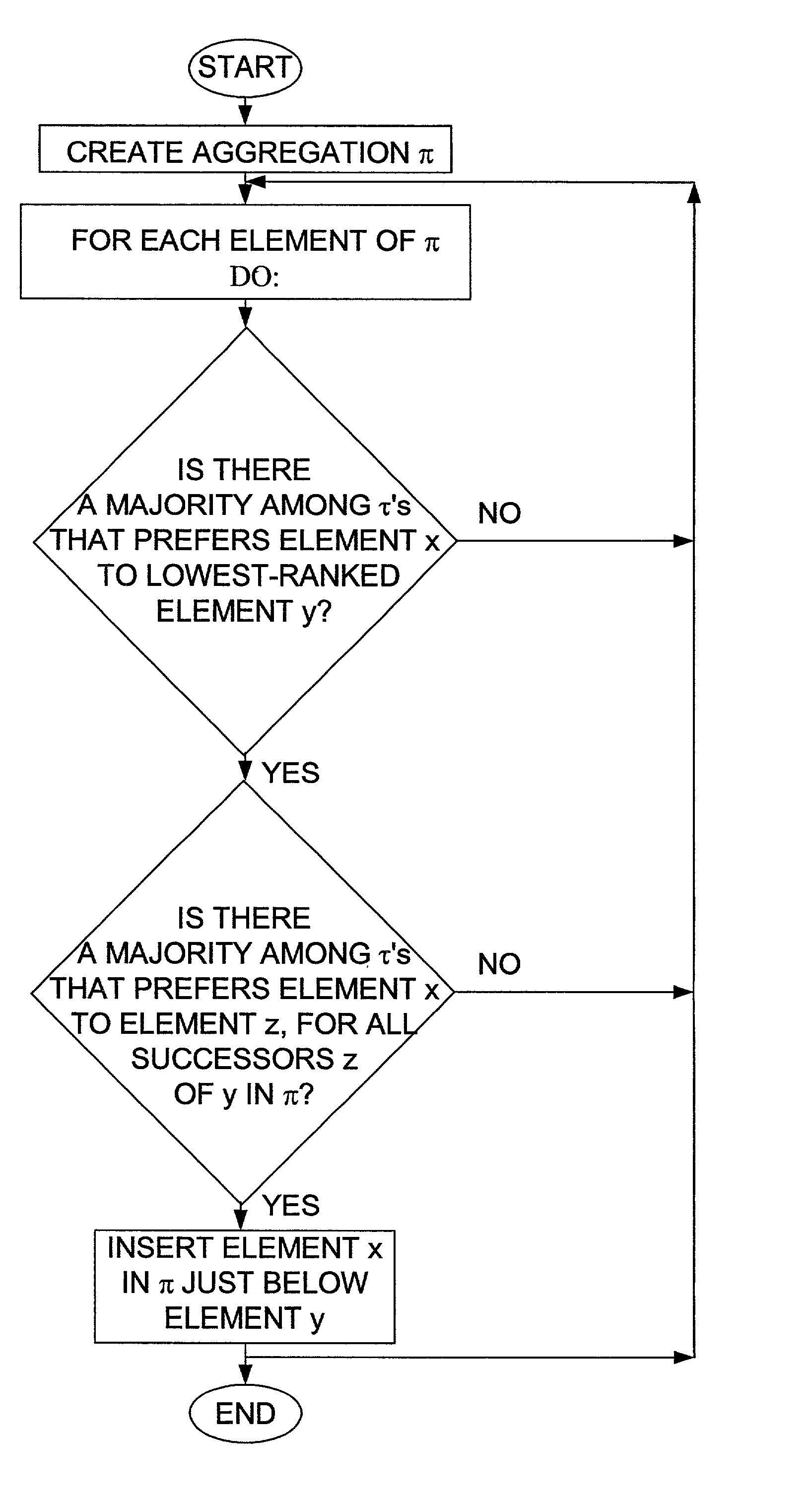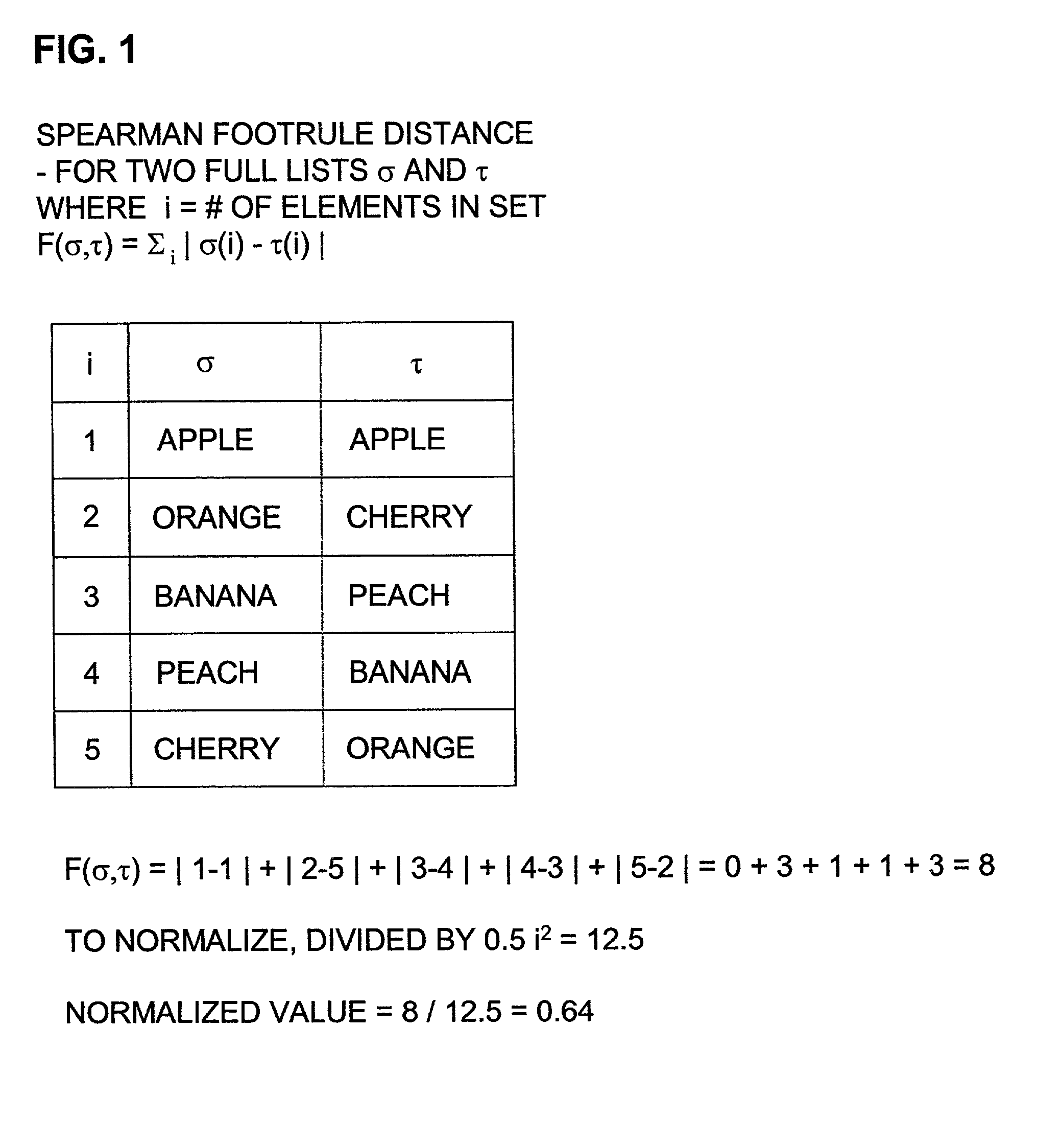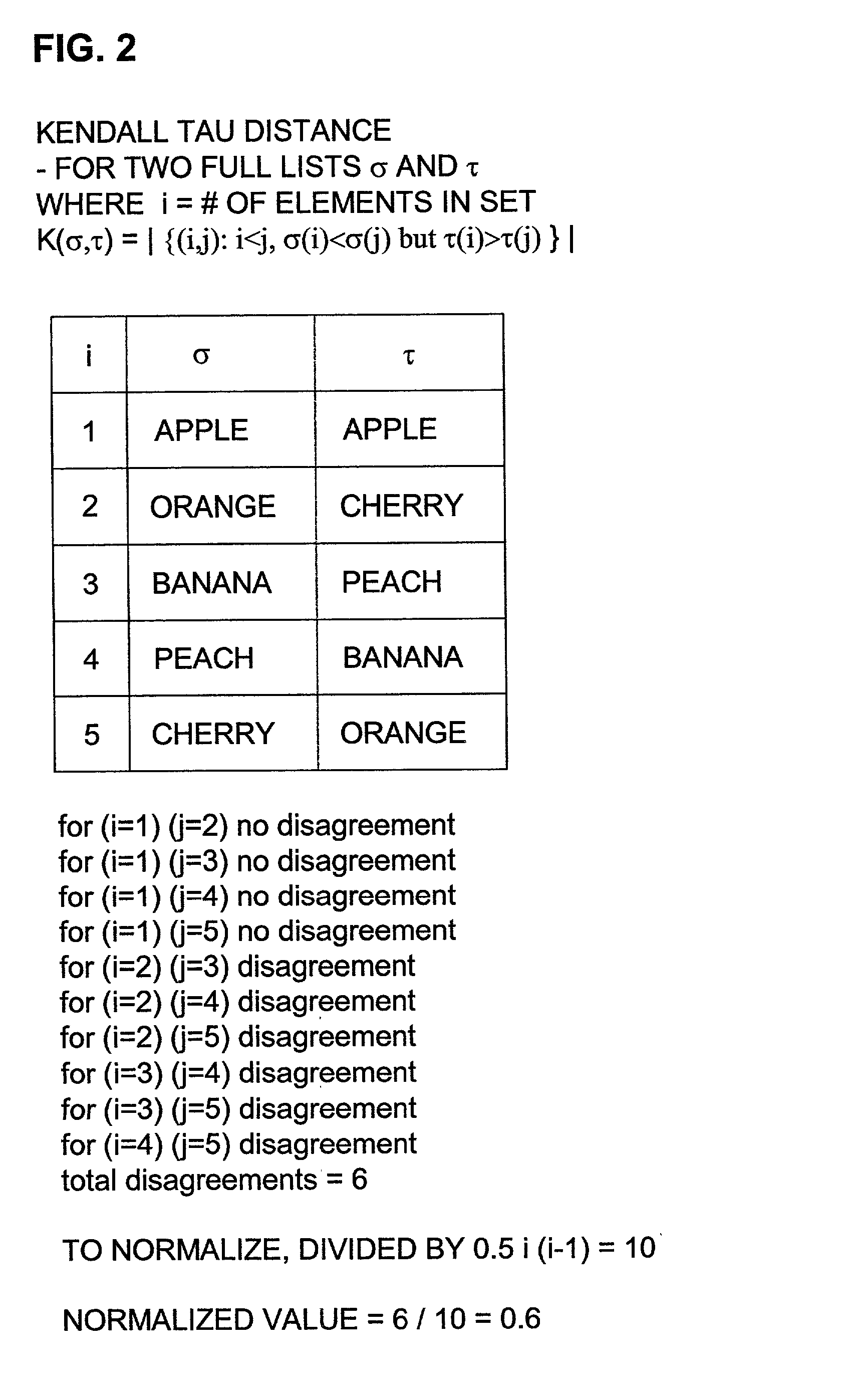In contrast, computing a "
consensus" ranking of the alternatives, given the individual ranking preferences of several judges, is not so easy.
First, no one ranking method can be considered broadly acceptable; that is, no single ranking function can be trusted to perform well for all queries.
Second, no one
search engine is sufficiently comprehensive in its coverage of the web.
Further, some data are not easily handled by simple ranking functions.
For example, search engines have more difficulty with queries about
multimedia documents than with queries about text documents.
Creators of web pages also complicate the problem of
information retrieval and ranking through deliberate efforts to ensure that their pages are presented to a user.
Users of such search engines may not have any form of protection against such deliberate ranking biases.
These applications include situations where user preferences span a variety of criteria, and the logic of classifying a document as acceptable or unacceptable is difficult to
encode into any simple query form.
Although an airline
reservation system is flexible enough to let the user specify various preference criteria (travel dates / times, window /
aisle seating, number of stops, frequent-flier preferences, refundable / non-refundable tickets, and of course, price), it may not allow the user to specify a clear order of importance among the criteria.
Word association queries are employed when a user wants to search for a good document on a topic; the user typically knows a
list of keywords that collectively describe the topic, but isn't sure that the best document on the topic necessarily contains all of them.
The former may produce no useful documents, or too few of them, while the latter may produce an enormous
list of documents where it is not clear which one to choose as the best.
This limitation is imposed in the interest of efficiency and to ensure the
confidentiality of the engines' particular ranking algorithms.
The aggregation obtained by optimizing total Kendall tau distance is called a Kemeny optimal aggregation; unfortunately, finding a Kemeny optimal aggregation is NP-hard.
(1) If .tau. contains all the elements in U, then it is said to be a full list. Full lists are, in fact, total orderings (permutations) of U. For instance, if U is the set of all pages indexed by a
search engine, it is easy to see that a full list emerges when one ranks pages (say, with respect to a query) according to a fixed
algorithm.
(2) There are situations where full lists are not convenient or even possible. For instance, let U denote the set of all web pages in the world. Let .tau. denote the results of a
search engine in response to some fixed query. Even though the query might induce a total ordering of the pages indexed by the search engine, since the index set of the search engine is almost surely only a subset of U, there is a strict inequality .vertline..tau..vertline.<.vertline.U.vertline.. In other words, there are pages in the world which are unranked by this search engine with respect to the query. Such lists that rank only some of the elements in U are called partial lists.
(3) A special case of partial lists is the following. If S is the set of all the pages indexed by a particular search engine and if .tau. corresponds to the top 100 results of the search engine with respect to a query, clearly the pages that are not present in list .tau. can be assumed to be ranked below 100 by the search engine. Such lists that rank only a subset of S and where it is implicit that each ranked element is above all unranked elements, are called top d lists, where d is the size of the list. A natural operation of projection will be useful. Given a list .tau. and a subset T of the
universe U, the projection of .tau. with respect to T (denoted .tau..sub. / T will be a new list that contains only elements from T. Notice that if .tau. happens to contain all the elements in T, then .tau..sub. / T is a full list with respect to T.
This leads to the problem of footrule optimal aggregation.
This is the same problem as before, except that the optimizing criterion is now the footrule distance.
However, they cannot satisfy the Condorcet criterion.
Reliance on evaluators in defining spam is probably unavoidable.
Many of the existing
aggregation methods do not ensure the election of the Condorcet winner, should one exist.
However, specific aggregation techniques may add considerable value beyond simple satisfaction of this criterion; in particular, they may produce good rankings of alternatives within a given partition (as noted above, the extended Condorcet criterion gives no guidance within a partition).
This idea stems from the goal of being unbiased, however, it is easy to show that for any method of assigning scores to unranked candidates, there are partial information cases in which undesirable outcomes occur.
Partial lists: The computation of a footrule-optimal aggregation for partial lists is more problematic.
The number or quality of web pages returned for many interesting multi-word queries is not very high (typically only around 10-15 pages are returned, and the top 5 results are often very poor), a direct consequence of the Google (TM) engine's AND
semantics being applied to a list of several query words.
 Login to View More
Login to View More  Login to View More
Login to View More 


